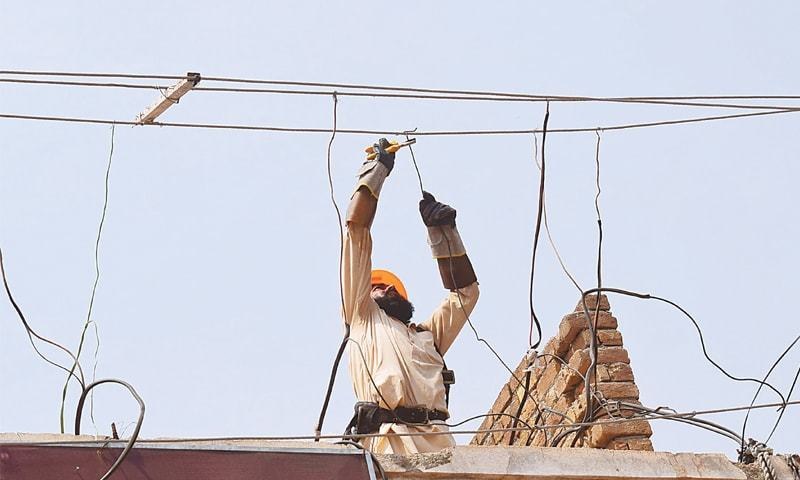Consumers of electricity across Pakistan are awaiting relief of approximately Rs 53.4 billion in their bills following a proposed tariff rollback. The refund arises from adjustments under the quarterly tariff mechanism for the April–June 2025 period.
The Central Power Purchasing Agency‑Guarantee (CPPA‑G) has petitioned the National Electric Power Regulatory Authority (NEPRA) to implement this substantial adjustment. A public hearing is scheduled for August 4, where the refund proposal will be reviewed and finalized.
Key Drivers Behind the Refund Proposal
Lower Capacity Charges
Major savings stem from reduced capacity payments, resulting from renegotiated power purchase agreements with both public and independent power producers. The net saving in this category amounts to around Rs 53.7 billion.
Operational & System Costs
While the capacity savings are substantial, some reversal comes from increases in operation and maintenance (O&M) costs, estimated at Rs 182 million, and higher use‑of‑system and market operation fees, adding another Rs 804 million.
Transmission & Distribution Gains
Improved efficiency in transmission and distribution has yielded additional savings of approximately Rs 662 million, further boosting the total relief.
Regional Breakdown of Proposed Savings
The proposed refund will be distributed across various distribution companies (DISCOs) in varying amounts:
- Faisalabad Electric: Rs 15.6 billion
- Lahore Electric: Rs 12.8 billion
- Multan Electric: Rs 8.5 billion
- Hyderabad Electric: Rs 6.8 billion
- Gujranwala Electric: Rs 6.1 billion
- Peshawar Electric: Rs 2.7 billion
- Tribal Areas Electric: Rs 3.0 billion
- Islamabad Electric: Rs 1.04 billion
- Sukkur Electric: Rs 504 million
One exception is Quetta Electric, which shows a cost increase of Rs 3.6 billion, and is thus expected to pass on charges, not refunds
Uniform Tariff Relief Extends to All Consumers
Under federal policy, the tariff adjustment applies uniformly across all electricity consumers including those served by K‑Electric in Karachi. Despite not directly contributing to capacity savings, K‑Electric customers will still benefit equally from the reduction.
Alongside the proposed refund, NEPRA has also enacted a new base tariff for K‑Electric approximately Rs 39.97 per kWh, comprising supply, transmission, and distribution charges. This aligns with broader goals to depoliticize tariff-setting and promote regulatory independence.
Financial Relief Timeline
- If NEPRA approves the CPPA‑G petition, the adjustment will reflect in August, September, and October 2025 electricity bills.
- A possible further reduction of around Rs 2.10 per unit could occur if approved adjustments are implemented as projected.
- This relief comes amid economic strain many households and businesses are grappling with broader inflation and cost-of-living pressures.
Why This Relief Matters for Consumers & the Economy
For Consumers
This proposed refund translates to immediate financial relief, providing welcome respite from rising utility costs especially impactful for low-income households and small businesses.
For the Power Sector
The adjustment underscores efforts to pass savings resulting from renegotiated contracts and enhanced operational efficiency directly to consumers. It also reflects…
- Transparency and fiscal responsibility
- An evolving regulatory environment under NEPRA’s enhanced authority
- Steps toward bringing discipline and affordability into the power sector
What Lies Ahead
- Participation in Public Hearing: Stakeholders, consumer groups, and the public can present comments at the August 4 NEPRA hearing.
- Approval & Notification: If approved, the refund mechanism will be formally declared and scheduled.
- Implementation: Consumers should monitor their August–October billing cycles for reflected adjustments.
- Communication: Distribution companies and regulators are expected to issue public guidance on how and when the refund applies.
Final Thought
If approved, the Rs 53.4 billion refund marks one of the most significant power-sector consumer relief initiatives in recent memory. It demonstrates a rare alignment of government policy, regulatory authority, and consumer welfare. More broadly, it highlights the potential benefits of competitive procurement and disciplined management in Pakistan’s energy ecosystem, especially when savings are rechanneled back to the public.



Comments (0)
No comments yet. Be the first to comment!
Leave a Comment